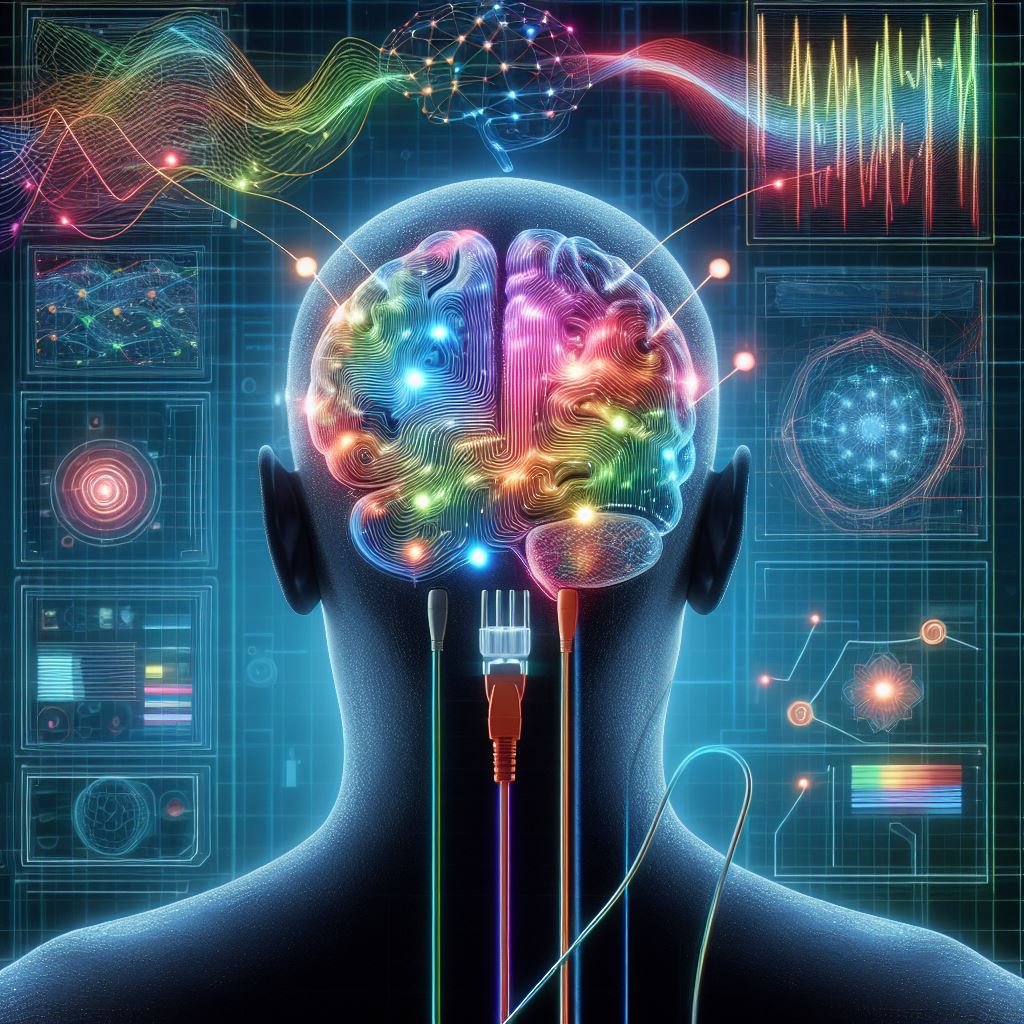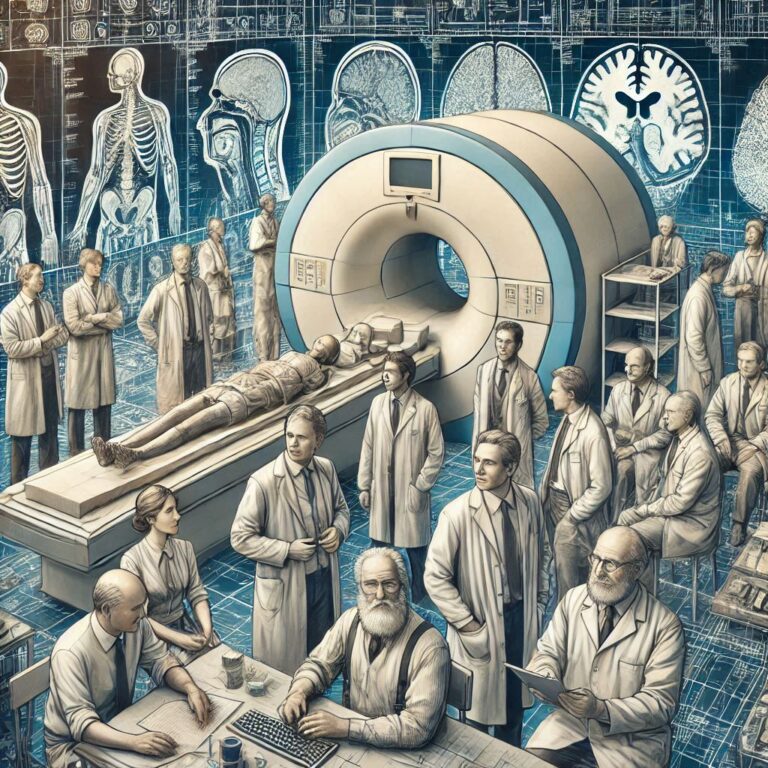Introduction- What is the brain-computer interface?
Close your eyes for a moment and imagine this: You’re effortlessly navigating a virtual world, manipulating objects and battling enemies solely with the power of your thoughts. Or perhaps you’re using a robotic arm to pour yourself a cup of coffee, all without moving a muscle.
Science fiction? Not anymore! This is the incredible potential of Brain-Computer Interfaces (BCIs), a revolutionary technology that’s rapidly bridging the gap between the human mind and machines.
But what exactly is a BCI? Think of it as a translator between your brain and the external world. By detecting your brainwave patterns, BCIs can decipher your intentions and translate them into digital commands. It’s like having a remote control for your mind!
Hi there! I’m Yuvraj, and I’m a passionate explorer of the ever-evolving world of technology. I’m fascinated by these cutting-edge advancements that have the potential to reshape our lives in profound ways. Today, I want to delve into the exciting realm of BCIs and explore how they’re transforming the landscape of human-machine interaction.
Industry leaders like Ramses Alc aide, CEO of Neurable, are pioneering the development of non-invasive BCIs – imagine sleek headphones that unlock the power of your mind! Their vision isn’t so far-fetched. Experts predict that BCI-powered devices could soon become commonplace, seamlessly integrated into our everyday routines.
So, buckle up and get ready to have your mind blown! We’re about to embark on a journey into the future, where the lines between thought and action are blurring like never before
Demystifying BCIs: How Does the Mind Talk to Machines?
Imagine a world where you can control a computer or prosthetic limb simply by thinking about it. Brain-computer interfaces (BCIs) are making this science fiction scenario a reality. These fascinating systems act as a bridge between your brain and external devices, translating your thoughts into commands.
Think of a BCI as a remote control for your mind! Instead of buttons, it uses your brainwaves – the electrical signals constantly buzzing within your brain. By picking up on these subtle electrical currents, BCIs can decipher your intentions and translate them into digital signals that can be understood by computers or other devices.
There are two main approaches to BCIs – non-invasive and invasive.
Non-invasive BCIs:
This is the most common type and uses techniques like Electroencephalography (EEG) to capture brain activity. EEG devices typically consist of a cap or headband equipped with electrodes that sit on your scalp. These electrodes detect the tiny electrical fluctuations generated by your brain cells as you think, move, or perceive your surroundings. It’s like eavesdropping on a conversation happening inside your head!
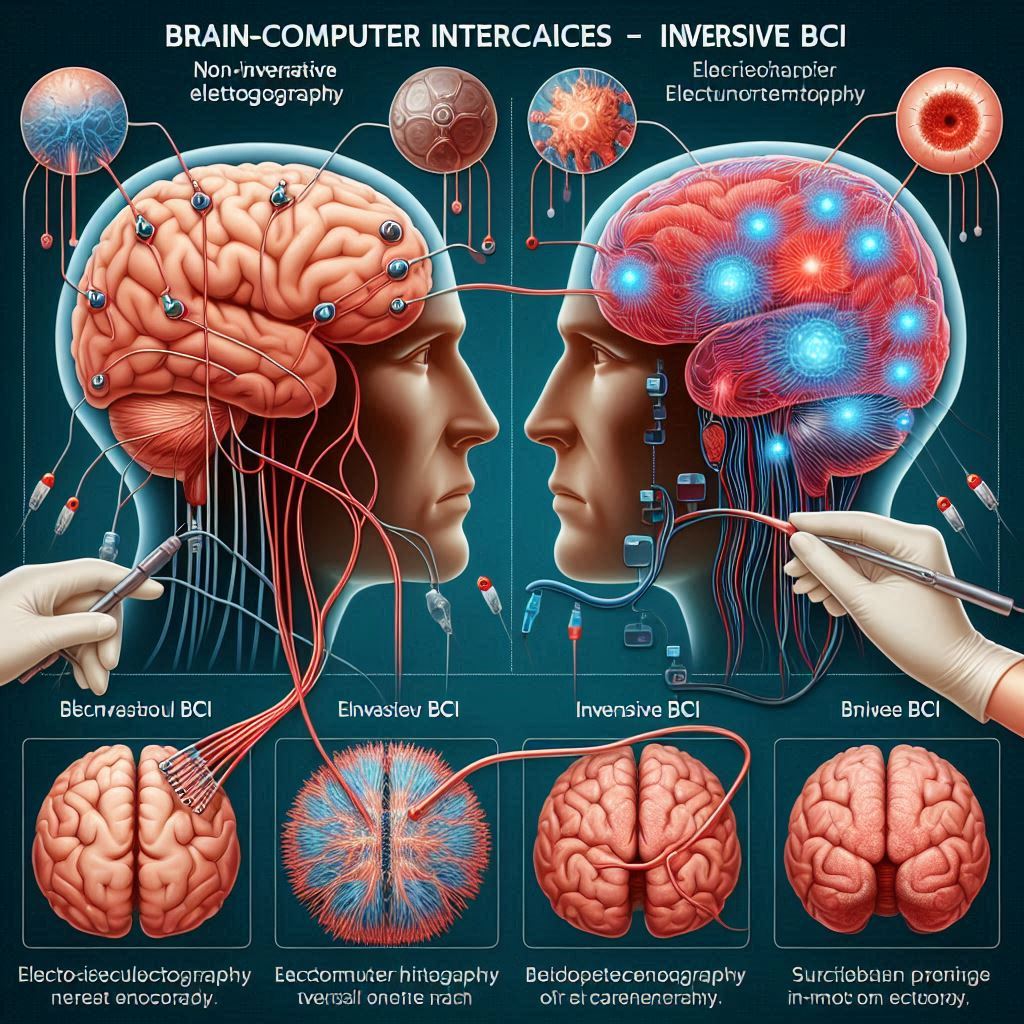
Invasive BCIs:
These involve surgically implanting electrodes directly onto the surface of the brain or even deeper within brain tissue. While invasive BCIs can provide a clearer and more reliable signal compared to non-invasive methods, they come with inherent risks associated with surgery and potential complications like infections.
But how exactly does a BCI translate these brainwaves into commands?
The journey begins with capturing the electrical activity generated by your brain. Here, we have two main approaches:
Electroencephalography (EEG-Brain Computer Interface):
This non-invasive technique utilizes a cap or headband equipped with multiple electrodes strategically placed on your scalp. These electrodes act as tiny microphones, picking up the faint electrical fluctuations produced by your neurons as you think, move, or perceive your surroundings. Think of it as eavesdropping on a complex conversation happening inside your head!
-
- Challenges and Solutions: However, EEG signals are notoriously weak and susceptible to interference from muscle movements, blinking, and even power lines in the environment. To overcome this, BCIs employ several strategies:
- Electrode Placement: Electrodes are positioned over specific areas of the scalp known for their association with particular brain functions. For instance, motor cortex activity, crucial for movement control, is often measured over the central scalp region.
- Challenges and Solutions: However, EEG signals are notoriously weak and susceptible to interference from muscle movements, blinking, and even power lines in the environment. To overcome this, BCIs employ several strategies:
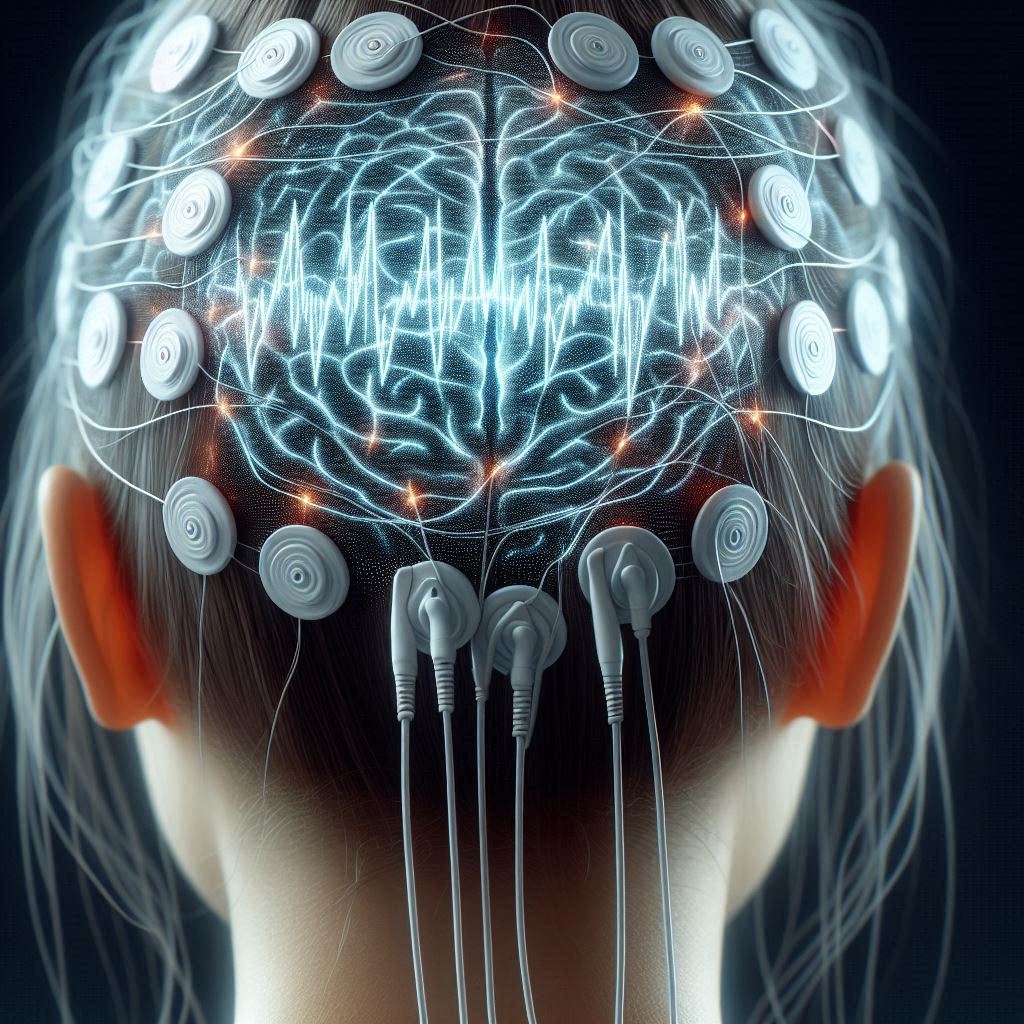
-
-
- Advanced Signal Processing Techniques: Sophisticated algorithms act like digital filters, removing unwanted noise and amplifying the specific brainwave patterns of interest. These algorithms can subtract electrical interference from muscles, eyes, and even the environment.
- Reference Electrodes: Some EEG systems use a reference electrode placed on the earlobe or mastoid bone. This helps to subtract common background noise, leaving behind the brain activity relevant to the BCI application.
-
- Implanted Electrodes: For a clearer and more reliable signal, invasive BCIs involve surgically implanting electrodes directly onto the surface of the brain or even deeper within brain tissue. While offering superior signal quality, this approach comes with inherent surgical risks and potential complications.
Signal Processing: Refining the Raw Data
The captured brain signals are like an unedited photograph – blurry and filled with unwanted elements. This is where signal processing steps in:
- Amplification: The faint brain signals are amplified to boost their strength and make them easier to analyze.
- Filtering: Imagine using software to sharpen a blurry image. Filtering techniques remove unwanted background noise from the amplified brain signal. Here are some common filtering methods:
- Bandpass Filters: These allow only a specific range of frequencies to pass through, eliminating unwanted signals outside that range. For example, a bandpass filter might be used to isolate the alpha wave frequency band (8-13 Hz) associated with relaxation for meditation applications.
- Spatial Filtering: This technique leverages the fact that brain activity is not uniformly distributed across the scalp. By analyzing the spatial distribution of the electrical signal, spatial filters can help to isolate activity from specific brain regions. For instance, to control a robotic arm with BCI, spatial filters might focus on activity in the motor cortex region.
Decoding: The Heart of BCI – Cracking the Neural Code
This is where the magic truly happens! Decoding involves analyzing the processed brainwaves to decipher the underlying intention behind them. Imagine a complex translator working tirelessly to understand the language of your brain!
- Machine Learning Algorithms: These algorithms play a critical role in decoding. Trained on a massive dataset of brainwave recordings paired with specific actions (e.g., imagining hand movement), the algorithms learn to recognize the unique patterns associated with different thoughts and translate them into corresponding commands.
- Supervised Learning: A common machine learning approach used in BCI development. The algorithm is presented with labeled data sets where brainwave recordings are paired with the specific actions they represent (e.g., moving a cursor left, right, up, or down). By analyzing these labeled examples, the algorithm learns to identify the brainwave patterns associated with each action.
- Challenges and Advancements: Decoding accuracy remains a significant hurdle in BCI development. The more complex the task (e.g., controlling a robotic arm with multiple degrees of freedom), the more challenging it becomes for the BCI to accurately interpret the user’s intentions. However, ongoing research constantly improves decoding algorithms and explores new techniques like deep learning for enhanced accuracy.
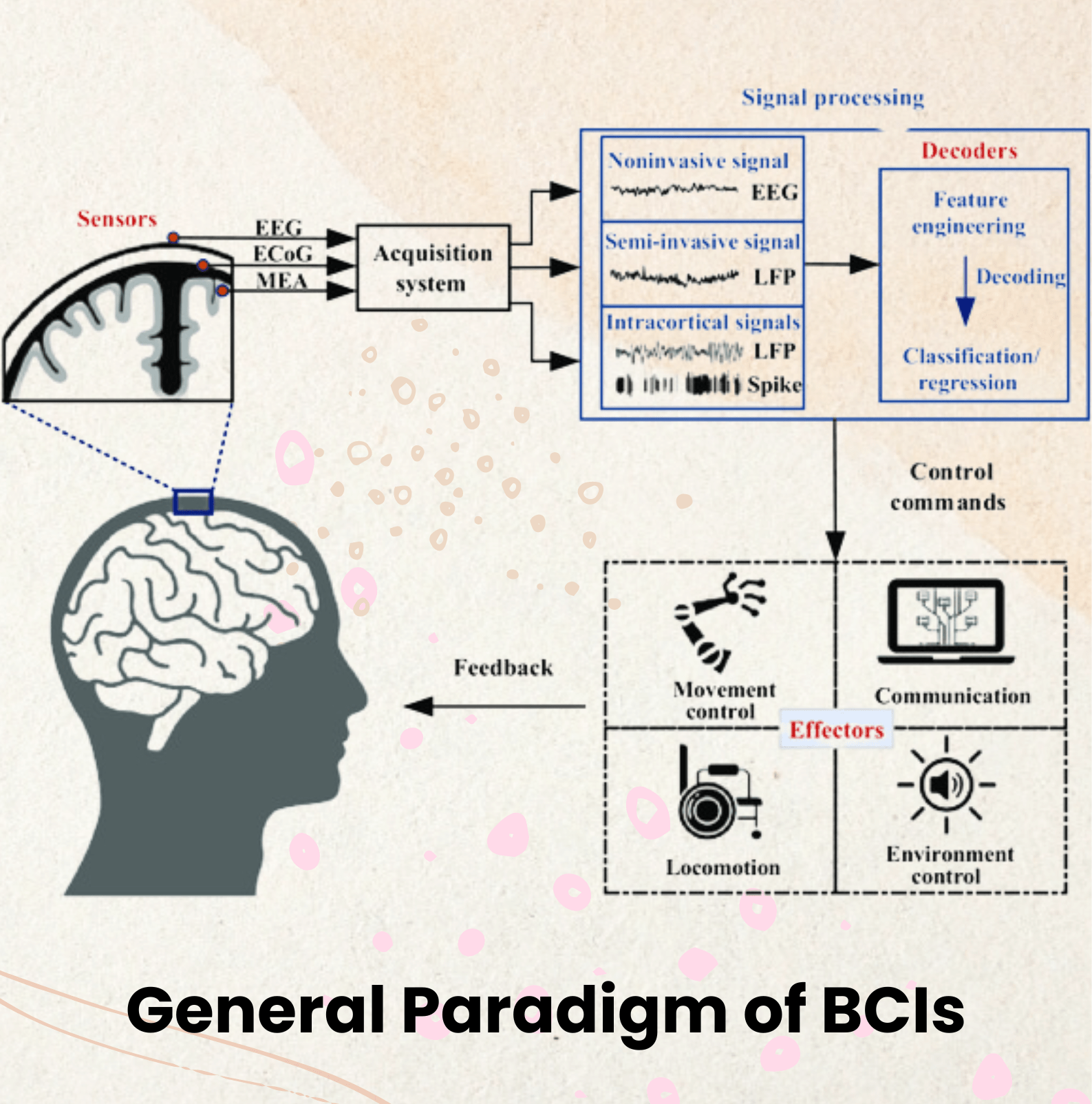
Output to Devices: Transforming Thoughts into Actions
The output format depends on the specific application:
- Computer Control: For controlling a computer cursor or virtual keyboard, the BCI might translate specific brainwave patterns into cursor movements or keystrokes.
- Prosthetic Limbs: BCIs can provide a newfound level of control for individuals with paralysis. Decoded brain signals can be used to control the movement and function of prosthetic limbs, allowing users to perform actions like grasping objects or walking with a more natural and intuitive feel.
- Virtual Reality: Imagine navigating a virtual world simply by thinking about where you want to go! BCIs can translate head movements and thought patterns into navigation commands within a VR environment, creating a truly immersive experience.
- Communication and Speech Synthesis: For individuals with locked-in syndrome who have lost the ability to move or speak, BCIs offer a glimmer of hope. By deciphering specific brainwaves associated with attempted speech, BCIs can potentially allow these individuals to communicate through synthesized speech or on-screen text selection.
It’s important to note that Brain-Computer Interfaces technology is still in its early stages of development. While significant progress has been made, current BCIs require extensive training and can struggle with accuracy and speed. However, ongoing research is constantly pushing the boundaries of this technology, with exciting advancements happening all around the world.
For instance, in 2020, researchers at the University of California, San Francisco, successfully demonstrated a BCI system that allowed a paralyzed patient to control a robotic arm with remarkable dexterity using only their thoughts.
Reference: A paralyzed woman can now control a robotic arm with her mind
These breakthroughs offer a glimpse into the immense potential of BCIs to revolutionize healthcare, communication, and even entertainment in the coming years.
History of Brain-Computer Interface
The concept of a brain-computer interface (BCI) – a direct bridge between our thoughts and technology – has captivated humanity for decades. But the journey to translate this science fiction into reality began much earlier, with the first attempts to understand the brain’s inner workings.
Early Explorations: Demystifying the Neural Landscape (1800s – Early 1900s)
- The Pioneering Steps: Early efforts to understand the brain focused on its anatomy and physiology. Pioneering scientists like Luigi Galvani and Emil du Bois-Reymond conducted experiments that laid the groundwork for electrophysiology, the study of electrical activity in living tissues.
The Spark of Discovery: Unveiling Brainwaves (Early 1900s)
- Hans Berger and the Birth of EEG: In 1924, a German psychiatrist named Hans Berger made a groundbreaking discovery. He developed the electroencephalogram (EEG), a machine that could detect and record the faint electrical signals produced by the brain. This marked the birth of a new era in brain research and paved the way for BCIs.
Delving Deeper: Mapping the Brain’s Microscopic World (Late 1800s – Early 1900s)
- Santiago Ramón y Cajal’s Artistic Precision: While Berger focused on the brain’s electrical activity, Spanish neuroscientist Santiago Ramón y Cajal meticulously mapped its intricate structure. Through his meticulous drawings of neurons and their connections, Cajal laid the foundation for understanding how brain cells communicate, a crucial aspect of BCI development. [Source: [Santiago Ramón y Cajal: http:// Cajal: neuron doctrine ON Nobelprize.org nobelprize.org]]
Modern Advancements: From Dreams to Reality (Mid-1900s – Present)
- The Rise of BCIs: Decoding the Language of the Brain: Following Berger’s discovery, scientists began exploring the possibility of using brain signals to control external devices. In the 1960s and 70s, pioneering researchers like Benjamin Libet and Edwin E. Adrian conducted experiments that demonstrated the potential for BCIs.
Source: A history of the development of the electroencephalogram (EEG) for brain function assessment
The Race for Innovation: Pushing the Boundaries (Present Day)
- A Global Endeavor: Today, BCI research is a global endeavor with companies like Neuralink, Synchron, and NextMind at the forefront. These companies are developing advanced BCIs with the potential to:
- Restore movement and communication for individuals with paralysis.
- Create new avenues for human-computer interaction in entertainment and augmented reality.
- Advanced medical treatments for neurological conditions.
Milestones and Breakthroughs:
- 1970s: Researchers successfully demonstrate basic BCI control of a robotic arm using brain signals.
- 2000s: The development of advanced signal processing techniques improves the accuracy and reliability of BCI systems.
- 2010s: The first successful BCI-controlled prosthetic limbs are used by patients with paralysis.
- 2020s: Ongoing research explores brain-to-brain communication and integration of BCIs with virtual reality.
- A Glimpse into the Future: In 2022, Neuralink, a company led by Elon Musk, showcased a monkey playing a simple video game using a BCI chip implanted in its brain. This breakthrough demonstrates the potential for BCIs to facilitate intuitive control of complex computer interfaces.
The journey to a seamless mind-machine interface is far from over, but the progress made thus far is truly remarkable. As BCI technology continues to evolve, we can expect even more groundbreaking applications that will revolutionize healthcare, communication, and our understanding of the human brain itself.
Exploring Brain-Computer Interface Applications
Imagine a world where a paralyzed individual can regain lost mobility by simply thinking about moving their arm. Or, picture someone with locked-in syndrome being able to communicate and express themselves through the power of their thoughts. These aren’t scenes from science fiction – they’re the very real possibilities that Brain-Computer Interfaces (BCIs) hold.
The driving force behind BCI development isn’t just technological advancement, but a deep-seated desire to empower those in need. As succinctly stated by Sumner Norman, a scientist at the non-profit startup Convergent Research and former chief brain-computer interface scientist at software firm AE Studio, “The near-term goal [of brain-computer interfaces] is to give the abilities back to those who have lost them.” This sentiment perfectly captures the transformative power of BCI technology, and its potential to impact countless lives across various domains. Imagine a world where individuals with paralysis regain control over their movements, or those with locked-in syndrome can finally express themselves. BCIs hold the promise to bridge the gap between lost abilities and restored function, offering a future shaped by empathy and a desire to improve human lives. Let’s delve into some of the groundbreaking applications where BCIs are making a real difference:
Restoring Movement: Empowering a Second Chance
For individuals with paralysis, regaining even a semblance of lost mobility can be life-changing. BCIs are offering a beacon of hope in this regard. Researchers at the University of California, San Francisco, successfully demonstrated a BCI system that allowed a paralyzed patient to control a robotic arm with remarkable dexterity using only their thoughts.
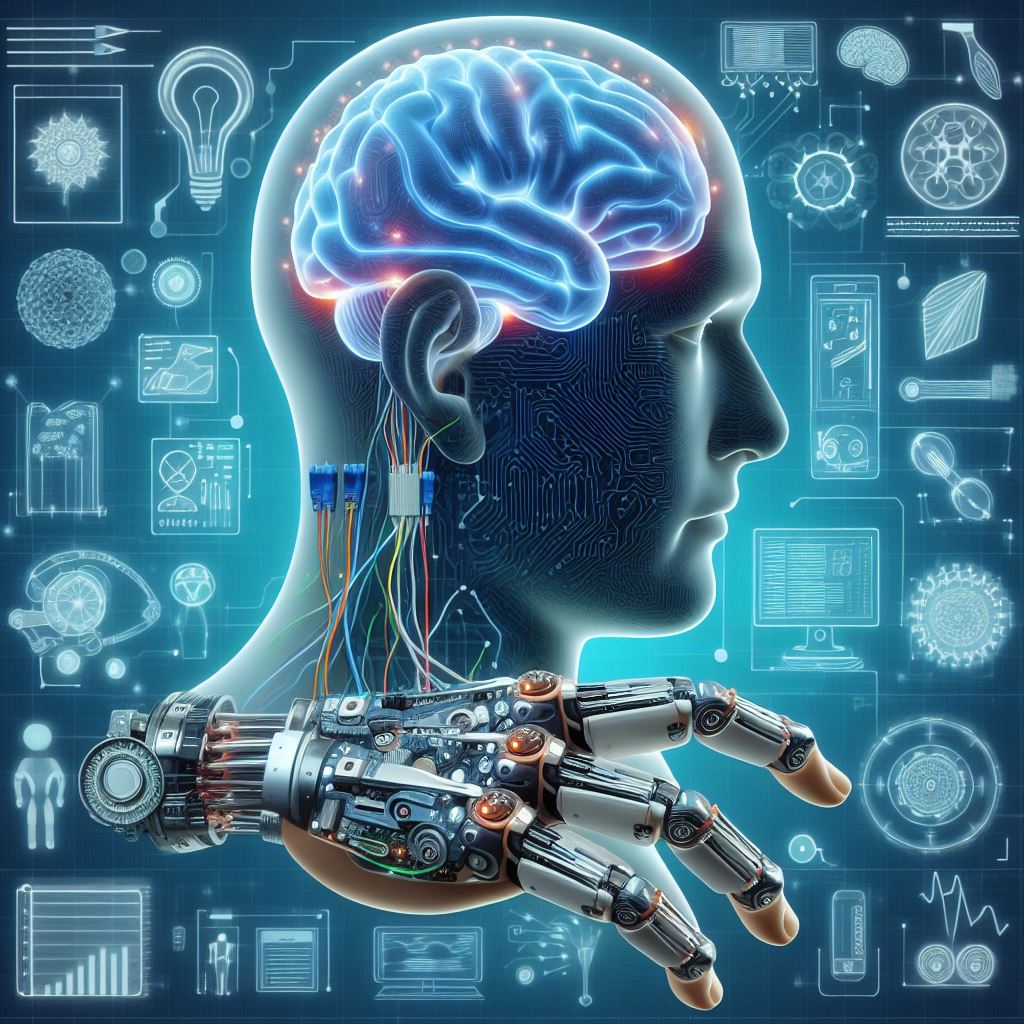
Source: A paralyzed woman can now control a robotic arm with her mind This breakthrough paves the way for potential applications in:
- Prosthetic Limb Control: Imagine a future where amputees can control their prosthetic limbs with natural, intuitive thought patterns. Companies like Parker Hannifin are already developing advanced prosthetic arms that integrate seamlessly with BCI technology.
Source: Parker Hannifin – Bionic Arm Technology
- Wheelchair Navigation: BCIs could be used to control wheelchairs through thought commands, offering individuals with paralysis greater independence and control over their movement.
Communication: Breaking the Silence with the Power of Thought
For people with conditions like ALS or locked-in syndrome, the ability to communicate can be tragically lost. BCIs are emerging as a powerful tool to restore a voice to those who have lost theirs.

- Spellers and Speech Synthesis Systems: BCI systems can decipher brain patterns associated with attempted speech and translate them into synthesized speech or on-screen text selection. This allows individuals with locked-in syndrome to communicate and express themselves, offering a vital lifeline for connection with the world around them.
Sensory Augmentation: A New Window to the World
BCI technology has the potential to expand our sensory perception and even create entirely new senses. Researchers are exploring ways to:
- Restore Vision: For those with visual impairments, BCIs could be used to stimulate the visual cortex of the brain with electrical signals, creating a form of artificial vision.

- Augment Reality: Imagine “seeing” the world through sound or feeling the texture of a virtual object with your mind. BCIs could create new sensory experiences and revolutionize the way we interact with the digital world.
Entertainment and Gaming: The Future of Play is Mind-Blowing
The world of entertainment is also poised to be transformed by BCIs. Imagine controlling video games or navigating virtual reality environments entirely through your thoughts. Companies like Neuralink are at the forefront of this exciting frontier, developing ultra-high bandwidth brain-computer interfaces with the potential to redefine gaming experiences.
Source: Neuralink
Beyond the Horizon: A World of Possibilities
The applications of BCIs extend far beyond the areas mentioned above. Here’s a glimpse of what the future might look like :
- Smart Home Control: Imagine controlling your lights, thermostats, or appliances with just a thought. BCIs could revolutionize smart home technology, creating a truly hands-free living experience.
- Drone Control: BCI-controlled drones could be used for search and rescue operations, exploration, or even aerial photography, offering intuitive and thought-driven control.
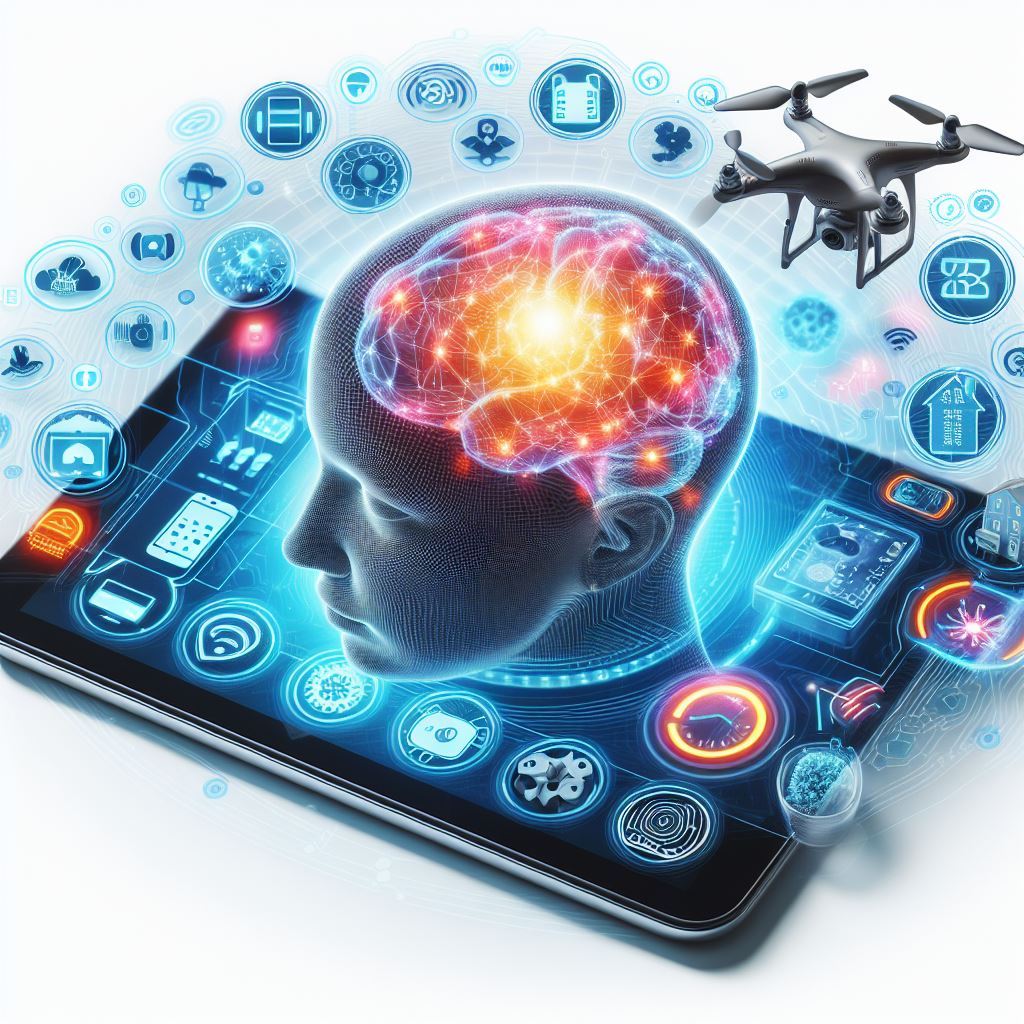
BCI technology is still in its early stages, but the potential for positive impact is undeniable. As research continues and technology advances, we can expect to see even more groundbreaking applications emerge in the years to come. The future where the power of thought shapes our reality might not be as far-fetched as it seems.
- Brain-Computer Interfaces (BCIs) hold immense promise for revolutionizing healthcare, communication, and even entertainment. However, the road to widespread adoption is paved with challenges that require careful consideration and ongoing research efforts.
- Accuracy and Speed: Ensuring Your Thoughts are Understood Clearly
One of the biggest hurdles in Brain-Computer Interface development is achieving reliable and accurate brain signal interpretation. Current BCIs can struggle with:
- Signal-to-Noise Ratio: Brain signals are inherently weak and susceptible to interference from muscle movements, eye blinks, and even power lines in the environment. EEG, the most common non-invasive method, faces this challenge significantly.
- Decoding Complexity: The more complex the desired action (e.g., controlling a multi-jointed robotic arm), the more challenging it is for the BCI to accurately decipher the user’s intentions from the brainwave patterns.
Solutions and Ongoing Research:
- Advanced Signal Processing Techniques: Researchers are constantly developing new algorithms and filtering methods to improve the signal-to-noise ratio and isolate specific brainwave patterns of interest.
- Machine Learning Advancements: Deep learning algorithms are being explored to improve the accuracy and speed of BCI decoding by learning complex patterns from vast datasets of brain activity.
- Brain-Computer Interface Calibration: Ongoing research focuses on developing BCIs that can continuously adapt and calibrate to individual users’ brain patterns for improved performance over time.
Ethical Concerns: Protecting Your Mind is Paramount
As BCI technology delves deeper into the human brain, ethical considerations come to the forefront:
- Privacy: Brain signals can contain a wealth of personal information about our thoughts, emotions, and even memories. Ensuring user privacy and data security is crucial.
- Security: The potential for hacking into a BCI and manipulating a user’s thoughts raises serious security concerns. Robust security measures are essential to prevent unauthorized access and misuse.
- Brain Manipulation: There’s a potential ethical dilemma surrounding the use of BCIs to directly modify or influence brain activity. Open conversations and clear ethical frameworks are needed to guide responsible development and use of BCI technology.
Accessibility and Affordability: Making Mind Control Accessible to Everyone
Currently, most BCI systems are expensive and require extensive training for optimal use. This limits accessibility for many who could potentially benefit from this technology.
- Non-invasive BCI Advancement: Research on improving the resolution and accuracy of non-invasive BCIs (like EEG) is crucial for wider accessibility compared to invasive surgery required for implant-based systems.
- Open-Source BCI Development: Initiatives promoting open-source BCI platforms and software could encourage innovation and development of more affordable and user-friendly systems.
Startups and Companies Leading the Charge:
Several startups and companies are actively working to address these challenges and advance BCI technology:
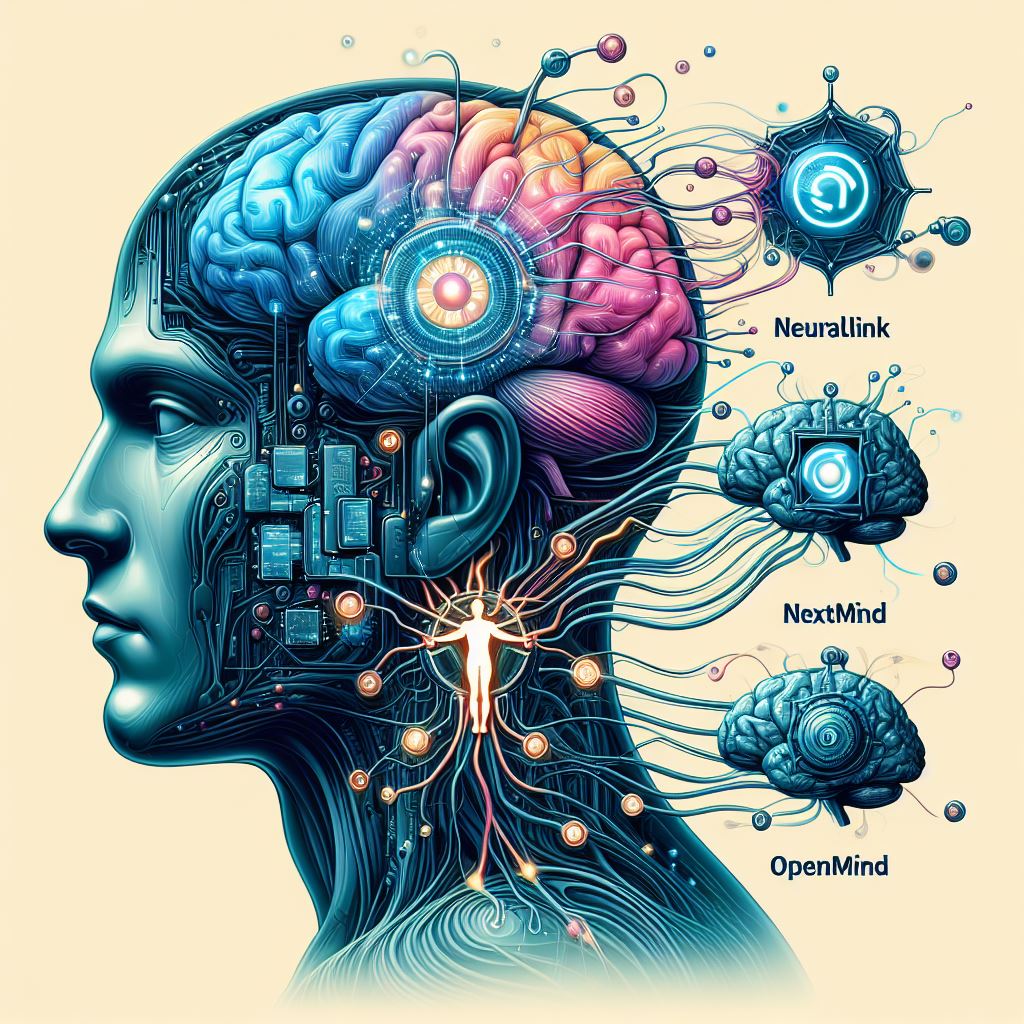
- Neuralink: Elon Musk’s Neuralink is developing ultra-high bandwidth brain-computer interfaces with the potential for seamless human-machine interaction.
- Synchron: This company focuses on developing BCI implants for treating neurological conditions like Parkinson’s disease and restoring lost movement.
- NextMind: This startup is creating non-invasive BCIs controlled through brain activity and eye movements, aiming for applications in entertainment and augmented reality.
- OpenBCI: This open-source platform provides affordable EEG hardware and software tools for BCI development, fostering community collaboration and innovation.
Painting a Brighter Future for BCIs:
While challenges remain, ongoing research and the dedication of these companies offer a promising future for BCI technology. By addressing issues like accuracy, affordability, and ethics, BCIs have the potential to empower individuals with disabilities, revolutionize healthcare, and unlock new avenues for human-computer interaction. As BCI technology continues to evolve, the possibilities for a future where our thoughts directly influence the world around us are becoming increasingly real.
Beyond the Hype: What are the future uses of BCI?
Brain-Computer Interfaces (BCIs) have captured the imagination of scientists and science fiction enthusiasts alike. The ability to control devices or even communicate directly with our thoughts holds immense promise for the future. But what lies beyond the current headlines and hype surrounding BCIs? Let’s delve into some truly mind-bending possibilities that BCI technology might unlock:
Brain-to-Brain Communication: Sharing Thoughts Directly
Imagine a world where you can share ideas, emotions, and even complex concepts directly with another person, simply by thinking them. BCIs could facilitate a new level of telepathic communication, revolutionizing collaboration, empathy, and even education. While this might seem like something out of a Star Trek episode, initial research is already underway. Scientists at the University of Washington have successfully demonstrated rudimentary brain-to-brain communication between two individuals playing a simple video game.
Source: Brain-to-brain interface allows people to collaborate using only their thoughts:
Blurring the Lines Between Human and Machine: Are We Becoming Cyborgs?
As BCIs become more sophisticated, they raise fascinating philosophical questions about the nature of consciousness and what it means to be human. With the ability to directly interface with our brains, could we be on the verge of becoming something more than just biological beings? Will BCIs ultimately blur the lines between humans and machines, creating a new era of cyborgs? These are complex questions that scientists, philosophers, and ethicists will need to grapple with as BCI technology advances.
Expanding Human Potential: What Does the Future Hold?
The potential applications of BCIs extend far beyond the current headlines. Imagine:
- Enhanced Learning: BCIs could personalize education by directly monitoring brain activity and tailoring learning experiences to optimize student understanding.
- Augmented Reality: BCIs could seamlessly integrate with AR technology, creating a world where information and virtual objects are overlaid on our real-world perception, controlled by our thoughts alone.
- Artistic Expression: BCIs could provide artists with entirely new mediums for creative expression, allowing them to translate their thoughts and emotions directly into music, paintings, or even sculptures.
Dive Deeper into the Fascinating World of BCIs:
For those curious to learn more about the exciting world of BCIs, here are some credible resources to explore:
- Brain-Computer Interface Society
- The Neural Information Processing Systems Foundation (NIPS)
- Kurzweil Accelerating Intelligence
BCI technology is still in its early stages, but the potential for positive impact is undeniable. As research continues and technology advances, we can expect to see even more groundbreaking applications emerge in the years to come. So, buckle up, and get ready for a future where the power of thought shapes our reality in ways we can only begin to imagine.
Conclusion: The Future of Mind-Machine Merging
Brain-Computer Interfaces (BCIs) stand at the precipice of a revolution. From restoring lost movement and communication for individuals with disabilities to pushing the boundaries of human-computer interaction and artistic expression, the potential applications of BCIs are as vast as our imaginations. Imagine a future where virtual reality is controlled by your thoughts, education adapts to your brainwaves, or paralyzed individuals regain control over their lives. The possibilities are truly limitless.
But as we stand on the threshold of this exciting new frontier, a crucial question emerges: With the increasing sophistication of Brain-Computer Interface, are we on the verge of becoming cyborgs – beings seamlessly integrated with technology? Will BCIs ultimately redefine what it means to be human? These are profound questions that demand thoughtful consideration as we navigate the development and use of this powerful technology.
The future of the Brain-Computer Interface is not something that will unfold passively. It’s a future we can actively shape. By fostering open discussions about the ethical considerations of BCIs, encouraging responsible research and development, and exploring the full potential of this technology, we can ensure that BCIs become a force for good, empowering individuals and enriching our collective human experience.
So, let’s delve deeper! Explore the resources provided, engage in conversations about the future of BCIs, and share your thoughts. Together, we can shape the destiny of mind-machine interaction and usher in an era where the power of thought transforms our world.
Check Out our other Interesting blogs:

